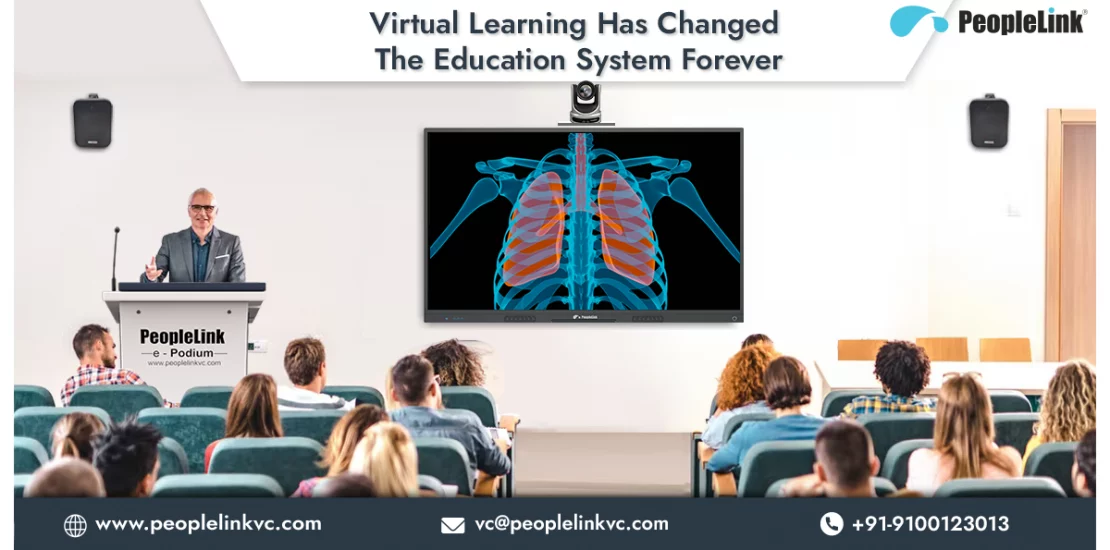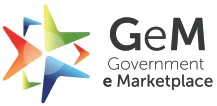How Virtual Learning is Reshaping Education in 21st Century
- July 14, 2022
- Posted by: PeopleLink
- Category: Blogs

A significant consequence of the COVID-19 pandemic for the education system has been the disruption of the traditional classroom learning environment and infrastructure. However, it has also eventually highlighted the transformation towards remote and digital learning, which has become a necessity for both educators and learners.
Although this transformation didn’t come easy, a worldwide health emergency forced the Learning curriculum to move towards a more Hybrid approach to education. Unfortunately, the spread of the virus was primarily affected, and to the present, the rate of infection keeps fluctuating every few months; a permanent Hybrid-flexible solution for the Education sector is the only option.
Significant Changes in Education System with Technology
Smart classrooms represent a significant evolution in education due to technology. Here are some notable changes:
Interactive Learning: Smart boards and the use of other digital display screens allow students to participate directly in a lesson and retain more information.
Access to Resources: Advanced computerized digital libraries and online database systems help with modern e-learning.
Remote Learning: Smart classrooms, particularly in this post-pandemic period, are intended to be conducive to many environments.
Personalized Learning: Adaptive learning software means the computer learns about the students and adjusts the pace and material according to their performance and learning styles.
Teacher Support: Technology supports the teaching process by helping to form lessons, tracking students’ performance in real-time, and detecting areas that require the teacher’s focus, thus improving the effectiveness of the educational paradigm.
Global Connectivity: Smart classes transcend local learning, offering virtual interactions and collaborations with students worldwide.
Data-Driven Insights: Computer-aided tools offer teachers information on students’ performance patterns and help them make the necessary changes to the program.
Sustainability: Smart classes contribute to sustainability by reducing paper usage and energy consumption. This aligns with the global trend of environmental consciousness in education.
But what is to be changed that is still the same?
The approach to teaching needs to change. Instead of focusing on When and Where, progressing towards What and How in our direction moving forward will embrace a new way of teaching. Instead of getting back to traditional classroom learning, focusing on impactful learning possibilities and powerful teaching strategies is essential at present. Leaning towards a hybrid-flexible approach in our classrooms will ultimately enhance the overall virtual learning experience.
Why is Hyflex learning important?
Technology-advanced classrooms for institutions, including Schools, Universities, and Colleges, have become essential criteria. Installing mixed learning models such as the HyFlex model turns out to be an advanced and intelligent solution. It results in a better learning process from anywhere at a time, with a perfect teaching room setup.
Innovation in the Edtech sector & the Global market size
Even before COVID-19, the growth and transformation in education technology were already extremely high, with global edtech investments reaching US$18.66 billion in 2019 and the market size for virtual education projected to reach as high as $350 Billion by 2025. Whether video conferencing tools or online learning software, there has been a very significant surge in usage since COVID-19.
According to a report by Grand View Research, the global Ed-tech market size was valued at USD 89.49 billion in 2020 and is predicted to witness and grow at a compound annual growth rate (CAGR) of 19.9% from the year 2021 to 2028.
Our Contribution in Development
PeopleLink’s HyFlex Classroom Solutions, including our student and teacher tracking cameras, Digital Podiums, Interactive devices, etc., provide an impeccable classroom environment for educators and learners, bridging the gap between a conventional and a smart classroom learning experience. With a prime focus on convenience, accessibility, and improved inclusivity, PeopleLink aims to digitize and transform every traditional classroom into a virtual space for an extravagant learning and education experience.
Conclusion
Virtual learning has emerged as a transformative force in 21st-century education, reshaping traditional models and expanding access to quality learning experiences. As technology continues to evolve, so too will the possibilities for personalized, interactive, and inclusive education. Embracing these innovations not only prepares students for a digitally-driven future but also empowers educators to engage learners in ways that foster creativity, critical thinking, and lifelong learning skills. As we navigate the complexities of a rapidly changing world, virtual learning stands poised to democratize education and pave the way for a more equitable and dynamic global learning environment.




